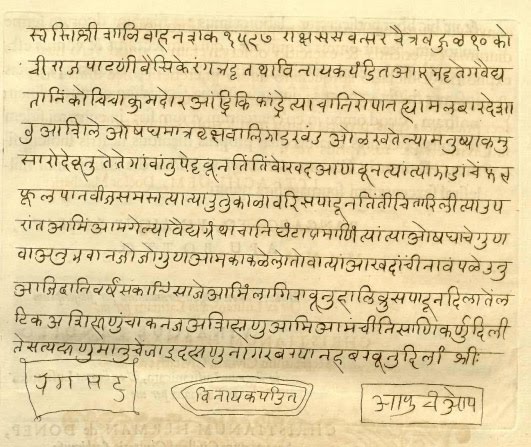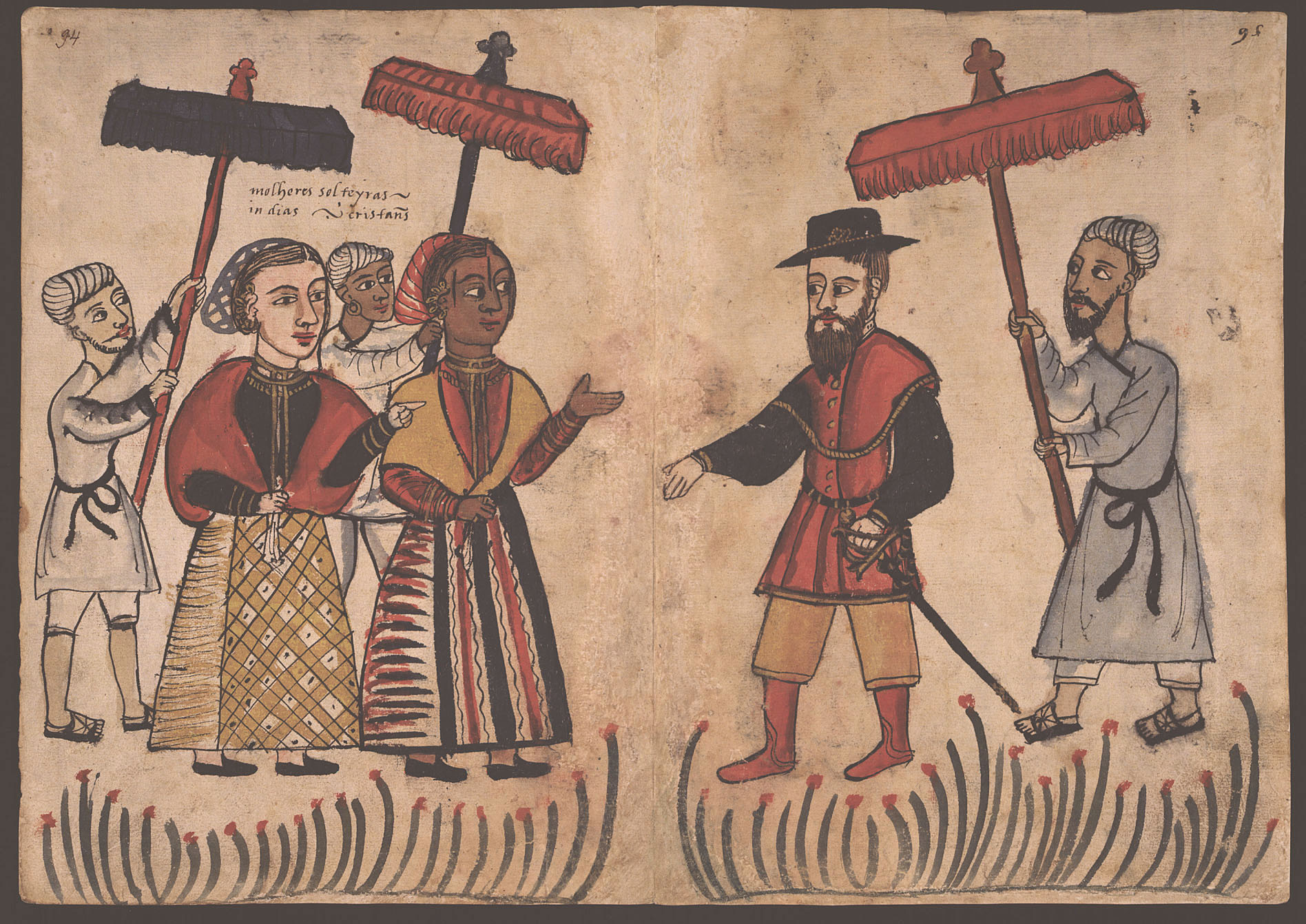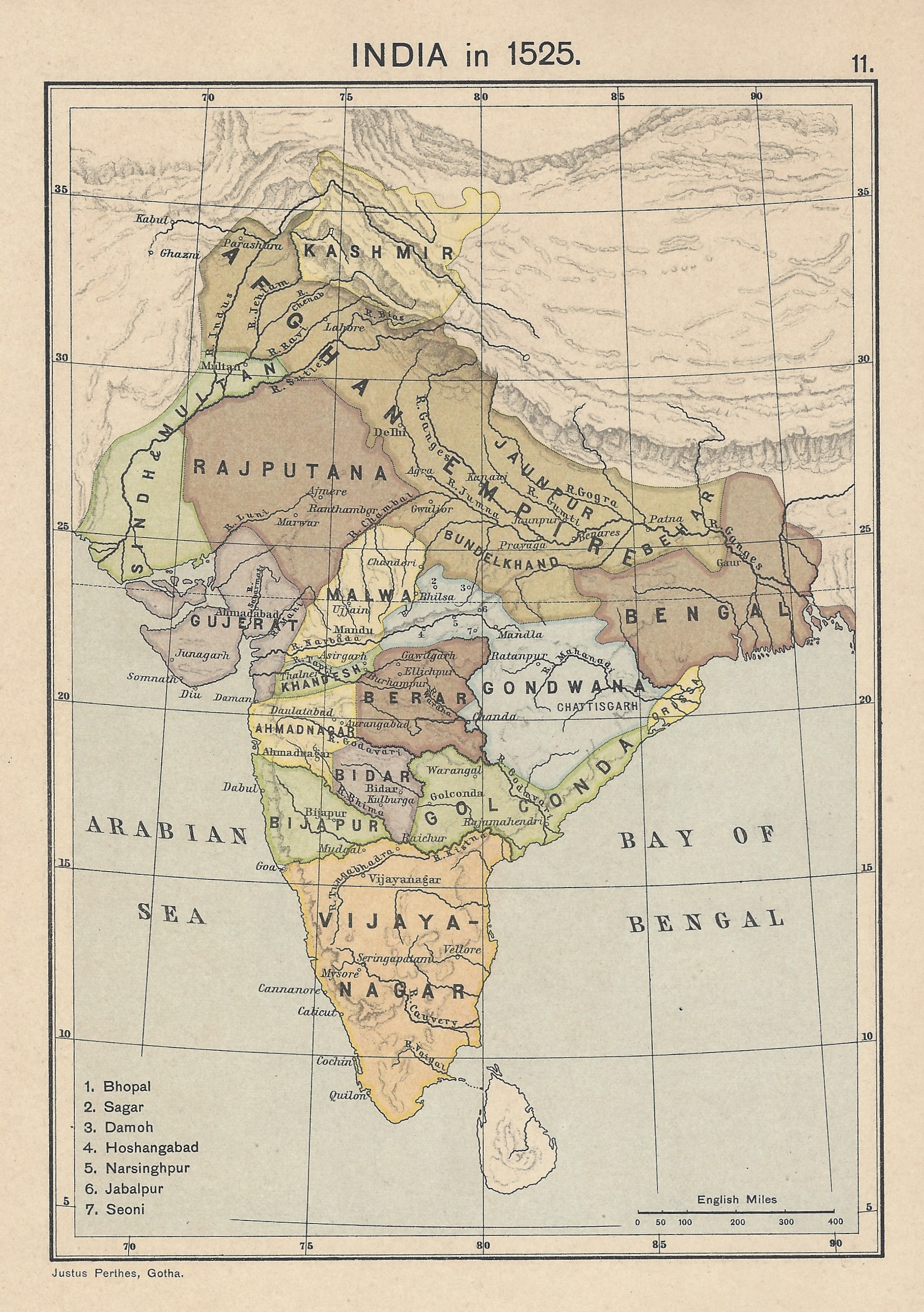|
Southern Saraswat Konkani
Southern Saraswat Konkani is a set of dialects spoken by Saraswat Brahmins of the Canara sub-region of Karnataka, and also in Kerala.The Constitution Act 1992 (71st Amendment) Names The Karnataka Saraswat dialects are referred to as Canara Konkani. The Kerala dialects are referred to as Travancore Konkani or Kerala Konkani. Certain dialects like the Canara Saraswat dialects of the Gaud Saraswats and Bhanaps are called and the dialect of the Cochin Gaud Saraswats is called by the members of those communities. The word ''Canara'' is a Portuguese rendering of the word ''Kannada''. The early Portuguese conquistadors referred to Konkani as ''lingoa Canarim'' as a reference to Canara. Geographic distribution The dialect is mainly spoken as a minority language in the Indian States of Karnataka, and in some parts of Kerala. The speakers are concentrated in the districts of Uttara Kannada district, Udupi and Dakshina Kannada in Karnataka. History Influx of Konkani speakers into Can ... [...More Info...] [...Related Items...] OR: [Wikipedia] [Google] [Baidu] |
India
India, officially the Republic of India, is a country in South Asia. It is the List of countries and dependencies by area, seventh-largest country by area; the List of countries by population (United Nations), most populous country since 2023; and, since its independence in 1947, the world's most populous democracy. Bounded by the Indian Ocean on the south, the Arabian Sea on the southwest, and the Bay of Bengal on the southeast, it shares land borders with Pakistan to the west; China, Nepal, and Bhutan to the north; and Bangladesh and Myanmar to the east. In the Indian Ocean, India is near Sri Lanka and the Maldives; its Andaman and Nicobar Islands share a maritime border with Thailand, Myanmar, and Indonesia. Modern humans arrived on the Indian subcontinent from Africa no later than 55,000 years ago., "Y-Chromosome and Mt-DNA data support the colonization of South Asia by modern humans originating in Africa. ... Coalescence dates for most non-European populations averag ... [...More Info...] [...Related Items...] OR: [Wikipedia] [Google] [Baidu] |
Dakshina Kannada
Dakshina Kannada district is located in the states and territories of India, state of Karnataka in India, with its headquarters in the coastal city of Mangaluru. The district covers an area nestled in between the Western Ghats to its east and the Arabian Sea to its west. Dakshina Kannada receives abundant rainfall during the Indian monsoon. It is bordered by Udupi district (formerly a part of this district) to the north, Chikmagalur district to the northeast, Hassan district to the east, Kodagu to the southeast and Kasaragod district of Kerala to the south. According to the 2011 census of India, Dakshina Kannada district had a population of 2,089,649. It is the only district in Karnataka state to have all modes of transport like road, rail, water and air due to the presence of a major hub, Mangaluru. This financial district is also known as the Cradle of Indian banking. Geography File:Sullia. Karnataka (3).jpg, Hilly region – Sullia Town File:Tannirubhavi beach 02.JPG, Coasta ... [...More Info...] [...Related Items...] OR: [Wikipedia] [Google] [Baidu] |
Gangolli
Gangolli (also Ganguli) is a village in Kundapur Taluk of Udupi district in Karnataka state. It is situated at the estuary of the Panchagangavalli River. It is located on a peninsula on the west coast of Karnataka. It is bordered by the river to the east and by the Arabian Sea to the west. The town was originally spelt as "Ganguli", but is now more commonly spelled as "Gangolli". The postal seal however still uses the old spelling. Location Gangolli is situated at the mouth of an estuary where 5 rivers, Souparnika River, Varahi River, Kedaka River, Chakra River, and Kubja River, together called "Panchagangavali" meet. The local Kannada versions of those river names are Kollooru hole, Haladi hole, Rajadi hole, Vandse hole and Hemmadi hole. History During the turmoil in the Vijayanagar Empire following its defeat at the Battle of Tallikota in 1565, Gangolli came under the rule of the Nayakas of Keladi from Keladi who until then were vassals/chieftains of Vijayanagara but ... [...More Info...] [...Related Items...] OR: [Wikipedia] [Google] [Baidu] |
Goa Inquisition
The Goa Inquisition (, ) was an extension of the Portuguese Inquisition in Portuguese India. Its objective was to enforce Catholic orthodoxy and allegiance to the Apostolic See of the Pontifex. The inquisition primarily focused on the New Christians accused of secretly practicing their former religions, and Old Christians accused of involvement in the Protestant Revolution of the 16th century. Also among the targets were those suspected of committing sodomy; they were given the second most harsh punishments. The inquisition was established in 1560, briefly stopped from 1774 to 1778, and was re-instated and continued until it was finally abolished in 1812. The Portuguese used forced conversion to spread Catholicism. The resulting crypto-Hinduism was viewed as a challenge to the Church's absolute religious control. Those accused of such practices were often instructed to confess and realign with Catholic teachings. Imprisonment, torture, death penalties, and intimidating peop ... [...More Info...] [...Related Items...] OR: [Wikipedia] [Google] [Baidu] |
Portuguese Conquest Of Goa
The Portuguese conquest of Goa occurred when the governor Afonso de Albuquerque captured the city in 1510 from the Sultanate of Bijapur. Old Goa became the capital of Portuguese India, which included territories such as Fort Manuel of Cochin, Bom Bahia, Damaon, and Chaul. It was not among the places Albuquerque was supposed to conquer. He did so after he was offered the support and guidance of Timoji and his troops. Albuquerque had been given orders by Manuel I of Portugal to capture Ormus, Aden, and Malacca only. Goa would remain under Portuguese control Annexation of Goa, until 1961.''Conversions and citizenry: Goa under Portugal, 1510–1610'' Délio de Mendonça pg. 82''ff'/ref> Background On 4 November 1509, Afonso de Albuquerque succeeded Dom Francisco de Almeida as Governor of the Portuguese State of India, after the arrival in India of Marshal of Portugal Dom Fernando Coutinho, sent by Manuel I of Portugal, King Manuel to enforce the orderly succession of Albuquerque t ... [...More Info...] [...Related Items...] OR: [Wikipedia] [Google] [Baidu] |
Christianization Of Goa
The indigenous population of the erstwhile Portuguese colony of Goa, Daman and Diu was Christianisation, Christianized following the Portuguese conquest of Goa in 1510 and the subsequent establishment of the Goan Inquisition. The converts in the ''Velhas Conquistas'' (Old Conquests) to Roman Catholicism were then granted full Portuguese citizenship. Almost all the present-day Goan Christians are descendants of these native converts; they constitute the largest Indian Christian community of Goa state and account for 25 percent of the population, as of 2011 Census of India. Many Christianity in Maharashtra#Bardeskars, Kudali, Mangalorean Christians, Mangalorean and Karwari Catholics in present-day Carnataca, Karnataka and Maharashtra share common origins with Goans, due to migration in the 16th and 17th centuries. Korlai Portuguese Creole, Korlai and Bombay East Indian Catholics of the Konkan division, and the Damanese Portuguese, Damanese of Damaon, Diu & Silvassa have had Goan ad ... [...More Info...] [...Related Items...] OR: [Wikipedia] [Google] [Baidu] |
Bijapur Sultanate
The Sultanate of Bijapur was an early modern kingdom in the western Deccan and South India, ruled by the Muslim Adil Shahi (or Adilshahi) dynasty. Bijapur had been a '' taraf'' (province) of the Bahmani Kingdom prior to its independence in 1490 and before the kingdom's political decline in the last quarter of the 15th century. It was one of the Deccan sultanates, the collective name of the kingdom's five successor states. The Sultanate of Bijapur was one of the most powerful states on the Indian Subcontinent at its peak, second to the Mughal Empire which conquered it in 1686 under Aurangzeb. After emigrating to the Bahmani Sultanate, Yusuf Adil Shah rose through the ranks to be appointed governor of the province of Bijapur. In 1490, he created a ''de facto'' independent Bijapur state which became formally independent with the Bahmani collapse in 1518. The Bijapur Sultanate's borders changed considerably throughout its history. Its northern boundary remained relatively stabl ... [...More Info...] [...Related Items...] OR: [Wikipedia] [Google] [Baidu] |
Yusuf Adil Shah
Yusuf Adil Shah (1450 – 5 December 1510), referred as Yusuf Adil Khan or Hidalcão by the Portuguese, was the founder of the Adil Shahi dynasty that ruled the Sultanate of Bijapur for nearly two centuries. As the founder of the Adil Shahi dynasty, Yusuf Adil Shah is credited with developing the town of Bijapur and elevating it to significant status. Legends of origin Yusuf Adil Shah may have been a Georgian slave who was purchased by Mahmud Gawan. Other historians mentioned him of Persian or Turkmen origin. According to the narrative presented by contemporary historian Firishta, Yusuf was a son of the Ottoman Sultan Murad II, although this is considered unfounded by modern historians. Another theory states he was a Turkman of the Aq-Quyunlu. Career Yusuf's bravery and personality raised him rapidly in the Bahmani sultan's favor, and resulted in his appointment as Governor of Daulatabad. The Bahmani Sultanate's last major sultan, Mahmood Shah Bahmani II, gave him the ... [...More Info...] [...Related Items...] OR: [Wikipedia] [Google] [Baidu] |
Bahamani
The Bahmani Kingdom or the Bahmani Sultanate was a late medieval Persianate kingdom that ruled the Deccan plateau in India. The first independent Muslim sultanate of the Deccan, the Bahmani Kingdom came to power in 1347 during the rebellion of Ismail Mukh against Muhammad bin Tughlaq, the Sultan of Delhi. Ismail Mukh then abdicated in favour of Zafar Khan, who established the Bahmani Sultanate. The Bahmani Kingdom was perpetually at war with its neighbours, including its rival to the south, the Vijayanagara Empire, which outlasted the sultanate. The Mahmud Gawan Madrasa was created by Mahmud Gawan, the vizier regent who was prime minister of the sultanate from 1466 until his execution in 1481 during a conflict between the foreign (Afaqis) and local (Deccanis) nobility. Bidar Fort was built by Ahmad Shah I (), who relocated the capital to the city of Bidar. Ahmad Shah led campaigns against Vijayanagara and the sultanates of Malwa and Gujarat. His campaign against Vijayanag ... [...More Info...] [...Related Items...] OR: [Wikipedia] [Google] [Baidu] |
Kadambas
The Kadamba dynasty were an ancient royal family from modern Karnataka, India, that ruled northern Karnataka and the Konkan from Banavasi in present-day Uttara Kannada, Uttara Kannada district in India. The kingdom was founded by Mayurasharma in , and at later times showed the potential of developing into imperial proportions. An indication of their imperial ambitions is provided by the titles and epithets assumed by its rulers, and the marital relations they kept with other kingdoms and empires, such as the Vakataka dynasty, Vakatakas and Gupta Dynasty, Guptas of North India, northern India. Mayurasharma defeated the armies of the Pallavas of Kanchi possibly with the help of some native tribes and claimed sovereignty. The Kadamba power reached its peak during the rule of Kakusthavarma. The Kadambas were contemporaries of the Western Ganga dynasty and together they formed the earliest native kingdoms to rule the land with autonomy. From the mid-6th century the dynasty con ... [...More Info...] [...Related Items...] OR: [Wikipedia] [Google] [Baidu] |
Govapuri
Gopakapattana or Gopakpatna (also known as , in Sanskrit, in Konkani, in Marathi, in Kannada) was a prosperous ancient port city in the present west coastal Indian state of Goa, that served as capital under the reign of different Hindu dynasties extending from 100 BC to 1469 AD which ruled ancient Goa (which included Modern Goa and South Konkan). In a certain Hindu scripture ''Suta Samhita'', Govapuri is associated with spiritually cleansing touch: ''...The very sight of Govapuri destroys any sin committed in former existence just as sunrise dispels darkness ...Certainly there is no other kshetra equal to Govapuri'' A similar hymn praising Govapuri city is found in Sahyadrikhanda of Skanda Purana, which says the extent of Govapuri was about seven ''Yojanas''. Gopakapattana is today a sleepy blink-and-miss village of Tiswadi. What may appear like just any other Goan roadside village, strewn across the paddy fields barely 10km from Panaji was, until the emergence of Ela or to ... [...More Info...] [...Related Items...] OR: [Wikipedia] [Google] [Baidu] |
Muhammad Bin Tughluq
Muhammad bin Tughluq (; ; 1290 – 20 March 1351), or Muhammad II, also named Jauna Khan as Crown Prince, further known by his epithets, The Eccentric Prince, or The Mad Sultan, was the eighteenth Sultan of Delhi. He reigned from 4 February 1325 until his death in 1351. The sultan was the eldest son of Ghiyath al-Din Tughluq, founder of the Tughlaq dynasty. In 1321, the young Muhammad was sent by his father to the Deccan Plateau to fight a military campaign against the Kakatiya dynasty. In 1323, the future sultan successfully laid siege upon the Kakatiya capital in Warangal. This victory over King Prataparudra ended the Kakatiya dynasty. Muhammad ascended to the Delhi throne upon his father's death in 1325. Muhammad bin Tughluq had an interest in medicine. He was also skilled in several languages: Persian, Hindavi, Arabic, Sanskrit and Turkic. Ibn Battuta, the famous traveler and jurist from Morocco, wrote in his book about his time at the Sultan's court. Early life Mu ... [...More Info...] [...Related Items...] OR: [Wikipedia] [Google] [Baidu] |






